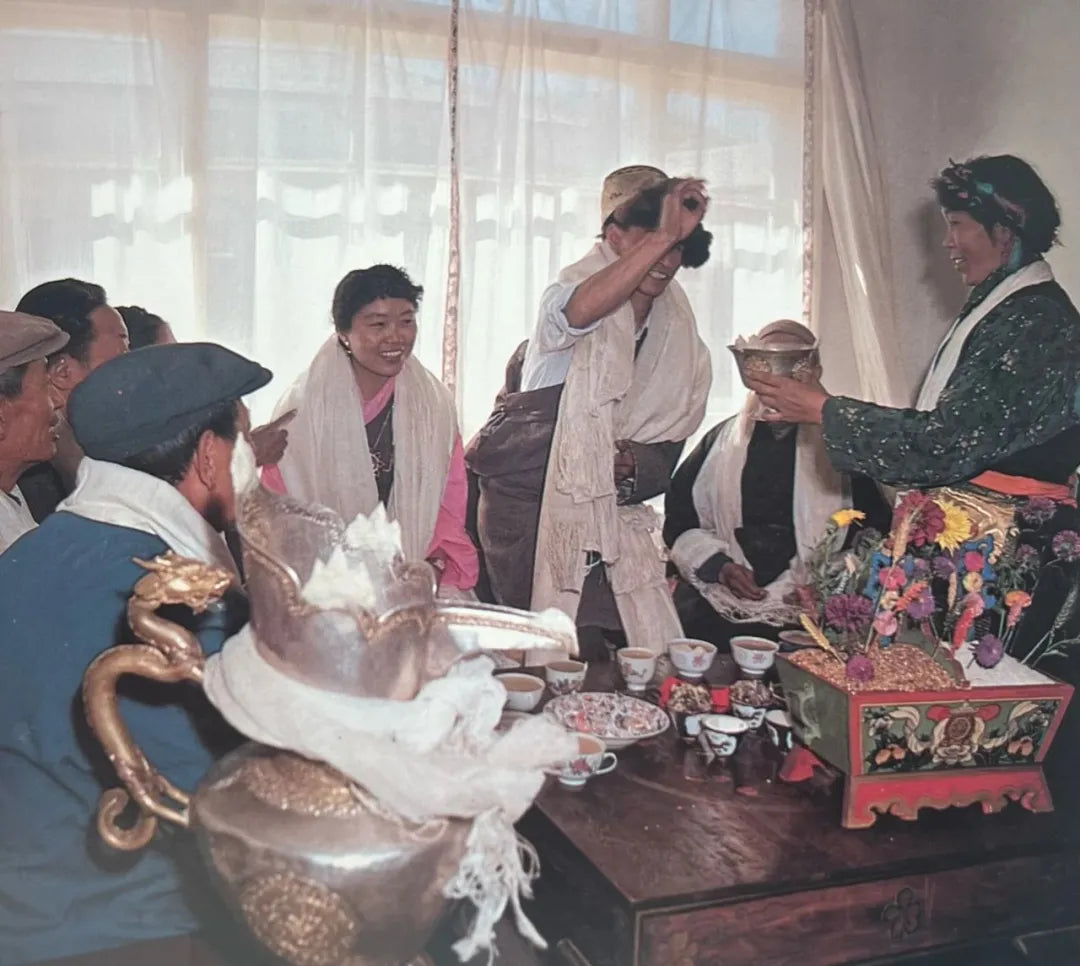
Life in Tibet in the 1980s

Summer Linaka

Riverside Sang Offering

Horse Racing

Tibetan Opera

Newlyweds

Celebrate the New Year
Spring Breeze First Reaches Tibet in 1980
Then, many illustrated albums
"From Grasslands to Cities,
From Dense Forests to Fertile Farmlands"
Capture the Diverse Aspects of Tibetan Life
— Album Introduction

Tibetan Medicine Preparation
Commercial Market
Barkhor Street
Is Lhasa's Commercial Center
From Dairy Products of Pastoral Areas to Tsampa from Agricultural Regions
From Rice and Flour of Han Areas to Spices from South Asia
A Variety of Goods
Sold Amid the Hawkers' Cries
In the Mid-to-Late Twentieth Century
Lhasa Department Store
Commonly Known as the "Grand Auditorium"
Gradually Became Another Commercial Center of the Ancient City

Barkhor East Street

Barkhor West Street

Lhasa Department Store

Lhasa Department Store
Plateau Cuisine
A Wide Variety of Dairy Products
Are a Feature of Tibetan Cuisine
All Rely on the Accumulated Efforts of Herders
Before Entering the Market
These Dairy Products Require Multiple Production Steps

Milking Cows

Milking Sheep

Separating Milk and Water

Removing Butter from the Mold
Fresh milk is continuously stirred and purified
Achieving the separation of milk and water
Eventually solidifying into butter
Butter and clear tea are poured into a churn and meticulously mixed
Becoming Tibet's most famous beverage
Butter Tea
And the combination of butter tea and tsampa
Is also the most renowned meal in Tibet

Churning Butter Tea
Pour butter tea into a wooden bowl
Add a small amount of butter
Pour in tsampa
Add dried cheese granules and white sugar
Mix, stir, knead into a ball, and it is ready to eat.

The Process of Eating Tsampa
Exemplary Handicraft
Colorful Pulu Aprons
Are Representative Works of Handwoven Craftsmanship
In the Yarlung Tsangpo River Valley Region
Among Them, the Aprons Produced in the Jiedexiu Area of Shannan (ལྕེ་བདེ་ཞོལ།)
Are Considered the Finest Among Them

Traditional Weavers of Aprons
Wooden bowls are utensils rich in Tibetan characteristics
In households large and small across Tibetan regions
Each family member
Has their own wooden bowl

An elderly craftsman is making a wooden bowl.

A little girl using a wooden bowl to hold yogurt.
Gold and silver utensils are also indispensable in Tibet
A finely crafted wooden bowl
After careful silver wrapping and engraving by a silversmith
Transforms into Tibet's most renowned ceremonial vessel
Silver Bowl (དངུལ་ཕོར།)

Silversmith

Silverware at Weddings
Fishing and Hunting Traditions
The tradition of fishing and hunting
Has always existed in the river valleys of Tibet and the Himalayan forest regions
In the valley areas
Fishing often serves as a supplement to deficiencies in animal husbandry
Thus becoming a distinctive local tradition
And giving rise to related song and dance culture
In the Himalayan forest regions
Fishing is a continuation of the fishing, hunting, and gathering traditions

Junba Fishing Village in the Lhasa River Basin

Himalayan Fishermen
Ancient Transportation
Before the emergence of a mature modern transportation network in Tibet
Mule and horse caravans and yak-skin boats
Were the primary means of land and water transportation in Tibet.

Horse Caravan Moving Through the Forest

Yak-skin Boat
Festivals Throughout the Four Seasons
In Tibet
Festival rituals hold a very important place in daily life
Nearly sixty days of the year are dedicated to festivals
From the New Year at the transition of winter and spring
To the Shoton and Lingka festivities in midsummer
And then to the Bathing Festival in early autumn
People always infuse their hopes and joys
Into every moment of the celebrations

Setting off firecrackers for the New Year

New Year's Gathering

Guests Performing Toeshey

Midsummer Lingka

Lingka Picnic

Performance at the Horse Racing Festival

Bathing Festival
If comparing contemporary festival ceremonies
Tibet in the early 1980s
Though attire and ritual objects were simple
The spiritual core of Tibet's reverence for celebrations
Has not faded with the passage of time

Riverside Laundry







1 komentarz
8pbbmc